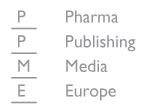

In 2003, WHO highlighted the worldwide issue of declining outcomes of chronic diseases resulting from poor adherence to treatment, describing it as a problem of ‘striking magnitude’ [1]. Adherence rates were 50% in developed countries and even lower in developing countries. Improved adherence enhances patient safety and is an important modifier of health-system effectiveness. In fact, Professor Haynes believes that ‘increasing the effectiveness of adherence interventions may have a far greater impact on the health of the population than any improvement in specific medical treatments’ [2].
Many studies of patient adherence to treatment repeatedly implicate the patient despite evidence to the contrary. The focus on patient-related factors as the cause of poor patient adherence to medications continues; provider and health system-related factors, i.e. factors that make up the healthcare environment in which patients receive care, also have a major affect on adherence.
WHO defines five interrelated levels that affect treatment adherence: socio-economic factors (poverty, education level, unemployment); patient-related factors (ability to self-organize, forgetfulness, knowledge); disease-related factors (symptoms, perceived benefits, concurrent depression); treatment-related factors (side effects and complexity of administration); and health system- and therapist-related factors (cost of acquisition, treatment options, communication).
No single intervention strategy, or package of strategies, has been shown to be effective across all patients, conditions and settings. Consequently, interventions that target adherence must be tailored to the particular demands of an illness experienced by the patient. To accomplish this, health systems and providers need to develop a means of accurately assessing adherence and also those factors that influence it.
Improving adherence is a continuous and dynamic process. Recent research in the behavioural sciences has revealed that patients can be categorised according to level-of-readiness to follow health recommendations. The mismatch between patient readiness and a practitioner’s attempt at intervention means that treatments are frequently prescribed to patients who are not ready to follow them. Healthcare providers should be able to assess a patient’s readiness to adhere to a drug regimen, provide advice on how to do it, and follow up the patient’s progress at every contact.
Healthcare providers can greatly influence adherence by assessing the risk of non-adherence and delivering interventions to optimize adherence. To implement this, practitioners must have access to specific training in adherence management, and the systems in which they work must design and support delivery systems that respect this objective. An ‘adherence counselling toolkit’ adaptable to different socio-economic settings is urgently needed to empower healthcare professionals. Such training needs to address three topics: knowledge (information on adherence), thinking (the clinical decision-making process) and action (behavioural tools for health professionals).
In the UK, millions of patients are given information leaflets by the pharmacist when their medications are dispensed to help them understand their medicines better. This has a measurable effect on patient compliance. In a patient study of 200,000 patients [3], adherence to medications increased between 16% and 33% within three months if a patient had talked to the pharmacist and received a patient leaflet from them.
WHO has continuously stated that a stronger commitment to an interdisciplinary and multiprofessional approach is needed to see improvements in treatment adherence. We know that this will require coordinated action from health professionals, researchers, health planners and policymakers. In 2008, ESOP met with the EU Commissioner Androulla Vassiliou, to discuss better quality and outcomes in the treatment of oncology patients, a positive step towards achieving this goal. In this issue of EJOP, several papers address the pharmaceutical industry’s position in the area of adherence. ESOP will continue to forge links with the EU, in particular, the EU Commissioner Tonio Borg, to demonstrate the strength and ability of pharmacists to best support patients.
References
Source URL: https://ppme.i2ct.eu/ejop_article/pharmacists-work-ensuring-adherence
Copyright ©2025 PPME unless otherwise noted.